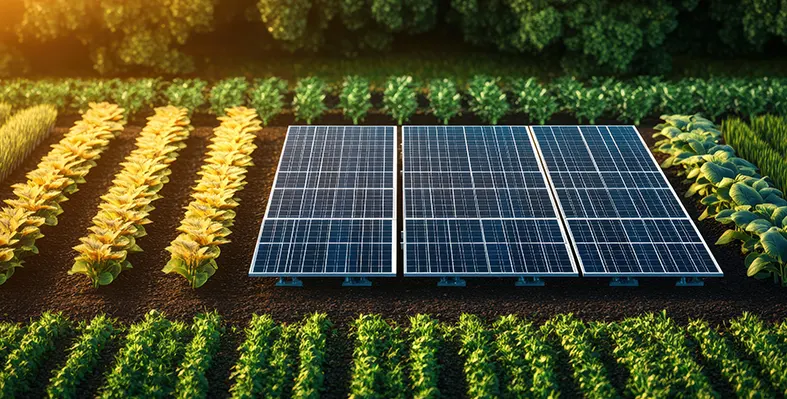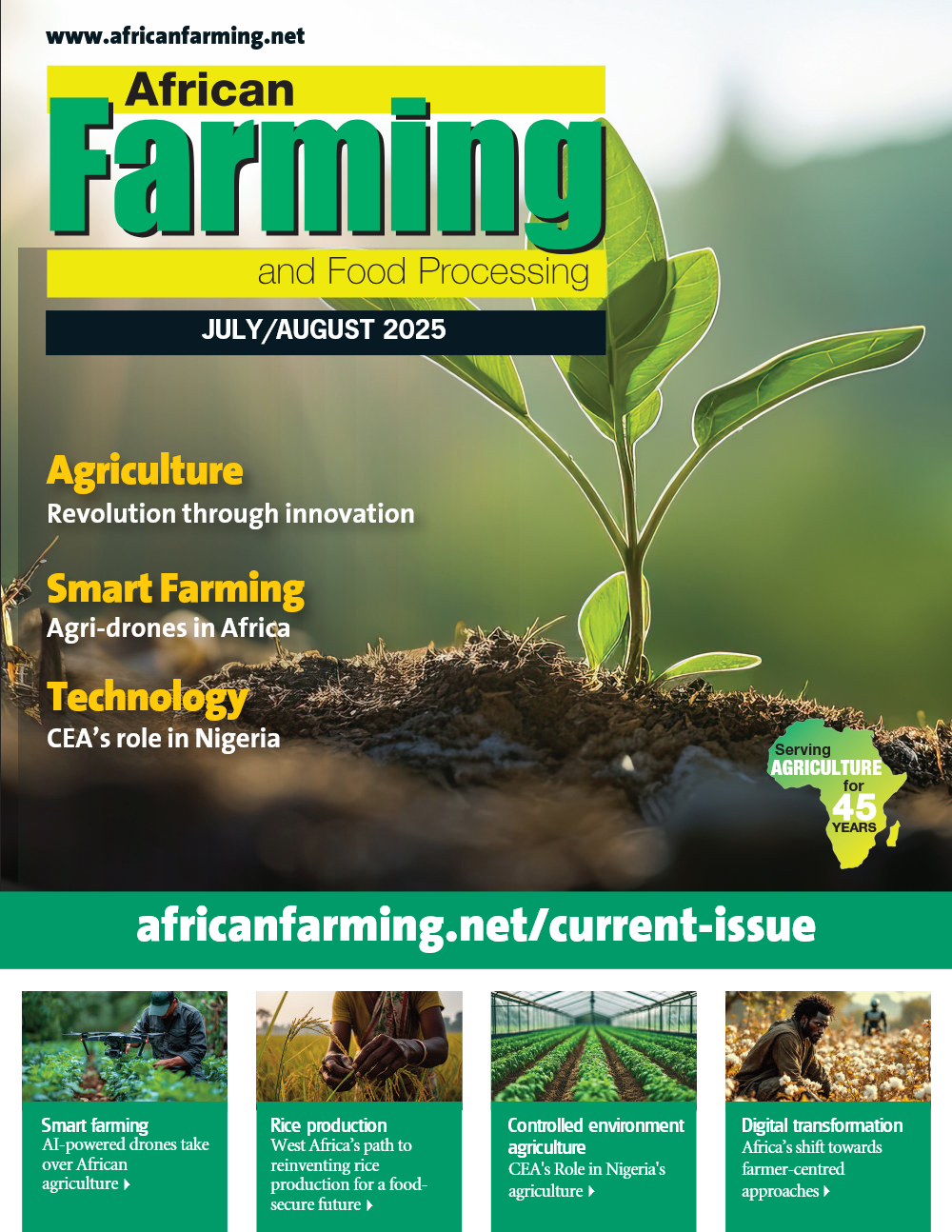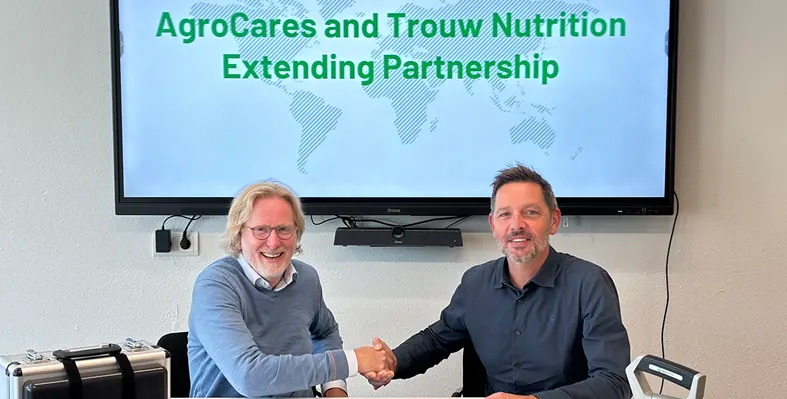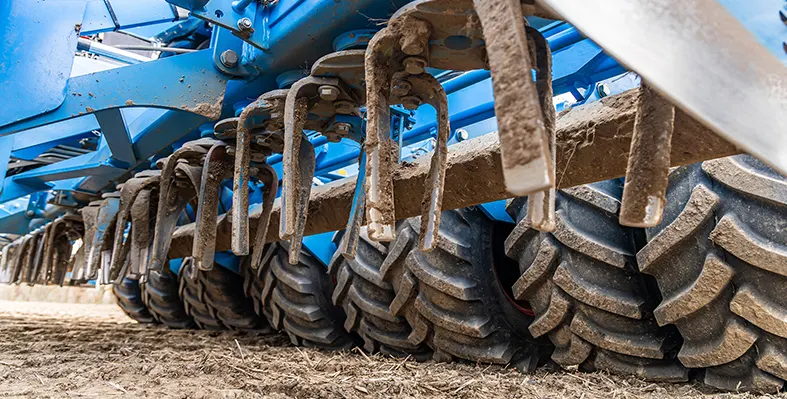In The Spotlight

As 2.6 bn people still cannot afford a healthy diet, this year’s report also explores food inflation.
Urgent global action needed to end hunger, says FAO in SOFI 2025 report
The Food and Agriculture Organization (FAO) has called for faster, more inclusive global action to tackle hunger and malnutrition.
Speaking at the launch of the 2025 State of Food Security and Nutrition in the World (SOFI) report, QU Dongyu, FAO Director-General stressed the need for urgent and united efforts to address the uneven progress being made.
This year’s SOFI report was presented for the first time in Africa, at an event in Addis Ababa, Ethiopia—a fitting choice as Africa continues to suffer the most from food insecurity.
The 2025 report shows a small global improvement, with hunger rates dropping slightly from 8.5% in 2023 to 8.2% in 2024. However, this progress hides major regional differences. Hunger is decreasing in Asia and Latin America but worsening in Africa, where 307 million people—about 20% of the population—are food insecure. It’s predicted that by 2030, Africa will make up nearly 60% of the global population facing chronic hunger.
“Recovery must be inclusive - we cannot accept a future where entire regions are left behind,” said Qu.
The launch event was attended by high-level figures including Amina J. Mohammed, UN Deputy Secretary-General, Taye Atske-Selassie, Ethiopia’s President, and Edmondo Cirielli, Italy’s Deputy Foreign Minister. Mohammed said: “Knowledge is power. Today’s launch of the SOFI report delivers sobering insights and the power to act,” adding that conflict must give way to cooperation to fix fragile food systems.
The Ethiopian President called the report “a compelling call for action,” saying it provides guidance for both short-term fixes and long-term solutions. Italy’s Cirielli stressed that food security is central not only to diet, but to the well-being of economies, societies, and global health.
The SOFI 2025 report—produced jointly by FAO, IFAD, UNICEF, WFP, and WHO—paints a troubling picture. Since 2020, 90 million more people face hunger, and 100 mn more than in 2015. In 2024, 2.3 billion people were moderately or severely food insecure.
Malnutrition trends are mixed. While child stunting has decreased slightly, wasting has not improved. Anaemia among women aged 15–49 has risen from 27.6% to 30.7%, and adult obesity increased from 12.1% in 2012 to 15.8% in 2022—highlighting the “double burden” of malnutrition.
New indicators in the 2025 report show poor diet diversity: only one-third of young children and two-thirds of women meet the minimum standards. “Much more must be done to expand access to nutritious, diverse diets for all - especially women and children,” Qu said.
As 2.6 bn people still cannot afford a healthy diet, this year’s report also explores food inflation. Since 2020, food prices have risen faster than general inflation, further revealing weaknesses in the food system.
“In the face of global disruptions, protectionist or inward-looking policies are counterproductive. What we need is coordinated global action—based on shared responsibility, solidarity, and sound evidence,” Qu said.
The FAO calls for “urgency, inclusiveness, and action” to ensure everyone, everywhere, has access to nutritious food. “Let us act now—not just with ambition, but with determination—to achieve Zero Hunger, leaving no one behind.”
Tools to accelerate Africa’s agrifood system transformation
Africa’s agrifood systems are key to improving food and nutrition security, creating jobs, protecting the environment, and building resilience to climate change.
The new Comprehensive Africa Agriculture Development Programme (CAADP) Strategy and Action Plan puts food systems transformation at the centre of its efforts.
The Kampala Declaration, which introduced the updated CAADP plan, focuses on speeding up progress. Mayaki, the African Union’s Special Envoy for Food Systems, stresses the need for faster change, warning that progress is too slow. The Food Systems Countdown Report by FAO shows that only 20 of 42 key indicators are heading in the right direction—and none fast enough to meet the Sustainable Development Goals (SDGs).
Transforming food systems is complex. These systems are made up of many moving parts—farmers, traders, processors, governments, civil society, and policies. Rather than thinking of food systems as machines, they can be seen as woven fabrics. “Each thread - farmers, processors, traders, governments, civil society - adds strength, colour, and purpose to the whole. When threads are tangled or frayed, the fabric weakens. When they are aligned, the weave is strong, adaptable, and beautiful" Mayaki added.
The aim is to strengthen that weave by helping decision-makers act faster and more effectively. To do this, a set of practical tools has been developed over the past eight years in different countries, including eight in Africa. These tools were created with input from hundreds of experts and institutions, many of them African. Leaders are encouraged to adapt and use these tools to make better, more impactful decisions.
The tools include:
Food System Dashboards – Combine data from many sources to identify problems and opportunities, and help target investments.
Policy Coherence Tool – Shows how well different policies support food system goals, avoiding conflicting actions.
Political Economy Assessment Tool – Helps spot political openings for action in real-world contexts.
3FS Tool – Maps public and donor funding to see if spending matches priorities.
Diet Quality Questionnaire – A quick survey to assess diet quality, which gives early warnings of food-related problems.
I-CAN (Climate Action and Nutrition) – Helps align actions on climate and nutrition, useful especially for policymakers and climate leaders.
Food System Countdown Initiative – Tracks progress and supports accountability in system transformation.
These tools can support the design of projects that are fundable, practical, and make a real difference. In a time of rising debt, uncertain trade, and shrinking aid, it’s vital to stay focused and act fast. UNFSS+4 is the right moment to step up and move forward to build strong, inclusive, and sustainable food systems across Africa-for today and generations to come.
Wetlands and agriculture: a vital partnership for our future
As global leaders gather in Zimbabwe for the 15th Ramsar Convention on Wetlands (COP15), there is a major opportunity to protect both food security and the environment.
Wetlands, which support global food production and provide many other benefits, are vanishing quickly.
Today’s food systems are under increasing pressure. To meet rising food demand, many wetlands are being drained and water is being overused. These actions may offer short-term solutions, but they damage long-term food productivity. Already, one-third of agricultural land is degraded, and wetlands continue to disappear.
To truly “Protect Wetlands for Our Common Future”—the official COP15 theme—three key actions are needed. First, clear targets should be set for wetland restoration, linked to climate and food security plans. Second, financial incentives should be created to reward farmers and communities for protecting wetlands. Third, wetland protection should be fully included in national policies on development and climate change.
The link between wetlands and agriculture is strong. Wetlands provide fish, support millions of livelihoods, supply irrigation water, recharge groundwater, and filter out pollutants. Over 95% of food production depends on healthy water and soil—both of which wetlands help protect.
Beyond farming, wetlands are vital for the climate. Peatlands, a type of wetland, hold more carbon per acre than any other ecosystem. Though they cover just 3% of the Earth's surface, they store 30% of all soil carbon. When looked after, they absorb carbon. When drained or burned, they release large amounts of CO₂ and methane.
Wetlands also help prevent disasters. They reduce flood risks, store water during dry periods, and provide 75% of the world’s accessible freshwater. But despite their huge value, the people who protect wetlands often receive nothing in return, while those who destroy them profit.
Currently, only 0.25% of global wealth goes to nature protection. Yet wetlands offer trillions in benefits. Restoring and protecting them would cost about US$275–550bn—just 0.5% of the world economy. With the right support, farmers could be paid for the services their wetlands provide, such as carbon storage and clean water.
These finance systems must work for countries at all stages of development. Local training and sharing of technology are key. It is also more cost-effective to protect healthy wetlands than to fix damaged ones.
The goal is to make wetland protection rewarding and achievable for farmers and communities. This needs systems to track progress, measure results, and share success stories.
We already know what works. In Asia, water-saving rice farming protects wetlands. In Europe, constructed wetlands clean farm water and support wildlife. Practices like reduced tilling and tree planting also help.
With climate change and food demands rising, wetlands must be part of the solution. The time to act is now.

The 11th edition of Agrofood Nigeria will take place in March 2026. (Image credit: Agrofood Nigeria)
Agrofood Nigeria 2026: a landmark event
The 11th edition of Agrofood Nigeria 2026 will be held from 24th to 26th March at the Landmark Centre in Lagos.
This major event highlights the growing momentum of Nigeria's agrofood sector, offering a unique platform for industry leaders, suppliers, and professionals across the entire value chain to come together.
Organised by Fairtrade Messe in collaboration with Modion Communications, Agrofood Nigeria 2026 is set to be a key event, drawing thousands of participants from across Nigeria and West Africa. It will showcase innovation and provide opportunities for networking, business development, and knowledge sharing. This year’s event features focused partial fairs, offering specialised experiences in agriculture, food + bev tech, food ingredients, packaging, and food + hospitality. This allows professionals to explore specific sectors in depth.
A highlight of the 2026 edition is the Netherlands as the guest of honour, marking the strong partnership between Nigeria and the Netherlands in the agrofood sector. This special designation will promote Dutch expertise and create valuable opportunities for collaboration between the two nations' agricultural stakeholders.
Key features of Agrofood Nigeria 2026 include:
- Increased regional reach with attendees from across West and Central Africa.
- Government participation, including ministries from both federal and Lagos State governments, demonstrating strong support for the event.
- National pavilions from countries such as China, Germany, Italy, the Netherlands, and South Africa, highlighting international collaboration.
- Over 100 global exhibitors showcasing tailored products and solutions for the Nigerian market.
- Insightful conference sessions, building on the success of 2025 with more speakers and networking opportunities.
- Co-location with WACCSE, promoting advancements in West Africa’s cold chain sector, enhancing technology and cooperation.
With support from over 20 respected organisations, including government agencies, international chambers, and trade bodies, Agrofood Nigeria 2026 cements its position as West Africa’s leading platform for innovation in the agrofood and packaging sectors.
Nigeria’s growing agrofood sector is reflected in its significant investments in food and packaging technology, making it one of Africa’s largest importers in this field. The Nigerian food market is projected to reach US$233.53bn by end of 2025, with a steady annual growth rate of over 10%, further boosting the importance of this key event.
Innovative pasture technologies for sustainable livestock farming
Nigeria's ministry of livestock development is working with state governments, experts, and international partners to modernise the livestock sector and ensure sustainable pasture and fodder for farmers.
The new initiative, supported by the L-PRES project, aims to tackle the challenges facing pasturelands, including overgrazing, land degradation, and climate change.
A meeting held in Abuja brought together stakeholders from various sectors, including state governments, livestock experts, the World Bank, and the Israeli ministry of agriculture. The event, organized by L-PRES, focused on "technologies for sustainable pasture production and management in Nigeria."
Idi Mukhtar Maiha, minister of livestock development, said, "As we confront pressing challenges ranging from overgrazing and climate stress to rising tensions over scarce pasture resources, it has become evident that innovation and collaboration must be our most potent tools." He further highlighted that managing pasture sustainably is not just an agricultural issue but a means to promote environmental stewardship, social stability, and economic resilience.
Sanusi Abubakar, national coordinator of the L-PRES project, pointed out that pasturelands are essential for livestock production but face growing threats and said, "These challenges not only affect productivity but also contribute to conflicts over scarce resources." Nigeria is now looking at climate-smart and technology-driven solutions to restore and sustainably manage its pasture ecosystems.
The meeting explored various innovative technologies, such as GIS, remote sensing, and precision irrigation, to improve pasture management. Experts also discussed best practices in rangeland and soil health management, sustainable pasture enterprises, and policy frameworks for long-term success.
Israel expressed its commitment to supporting Nigeria’s livestock sector. Daniel Werner, head of foreign relations of Israeli ministry of agriculture, said,"Israel has developed technologies that can help modernize Nigeria's livestock sector."
Livestock farmers welcomed the initiative but called for a sustainable development model that benefits both farmers and investors. Alhaji Ibrahim Usman Jibril, the Emir of Nasarawa, urged experts to avoid past mistakes, such as those made with cassava farming, where farmers were encouraged to invest without sufficient market opportunities.
Some L-PRES participating states, like Borno and Gombe, have appealed to investors by offering incentives, such as free land ownership titles in Borno for anyone interested in investing in the state's 180 square kilometres of grazing land.
FG to establish livestock breeding centres

Crops are grown beneath or around the solar panels, making it possible to produce food and energy side by side.
Nigeria backs agrivoltaic farming to boost food and energy security
The Federal Government has pledged its support for agrivoltaic farming as a way to increase both food and energy production across Nigeria.
This was announced by Uche Nnaji, the minister of innovation, science and technology, during the first International Agrivoltaics Workshop held in Abuja.
The event also featured the unveiling of a new book titled “Democratising the Sun: Agrivoltaics and the Future of Farming in Nigeria and Africa.” It was organised by the LIFEWS Foundation (Lichipu for Food, Energy and Water Sustainability) in collaboration with the University of Abuja and with support from researchers at Oregon State University in the United States.
Agrivoltaics, also called agrisolar, involves combining crop farming with solar panel installation on the same land. Crops are grown beneath or around the solar panels, making it possible to produce food and energy side by side.
Nnaji described the workshop and book launch as examples of the kind of innovation-led, climate-smart, and community-focused strategies his ministry is encouraging. He said this method fits into the ministry’s broader vision of using science and technology to promote national development, improve competitiveness, and support environmental sustainability.
According to the Nnaji, agrivoltaic farming offers several practical benefits for farmers. It can improve crop yields by creating moderated microclimates, reduce water loss through evapotranspiration, and make irrigation more efficient.
He also praised the book’s authors and partners for their efforts in introducing agrivoltaic technology to Nigeria and noted that his ministry is promoting the local development and production of solar-powered agricultural technologies.
Nnaji reaffirmed the government’s commitment to supporting innovative, climate-resilient technologies like agrivoltaics, which can be scaled to reach more rural communities and help transform farming in the country.
Gabriel Ayayia, founder of the LIFEWS Foundation and author of the book, explained that agrivoltaics represents a shift in farming methods towards more sustainable and self-reliant food production.
“What we are promoting today is a new way of farming, which is climate-smart agriculture, climate-smart farming. So, instead of just farming in the traditional way, we are thinking of reimagining agricultural practices,” Ayayia said.
The workshop highlighted agrivoltaics as a promising solution to improve food sovereignty, boost energy access, and support climate adaptation efforts. Stakeholders agreed that wider adoption of this system could help Nigeria build a more resilient and sustainable agricultural sector in the years ahead.








































